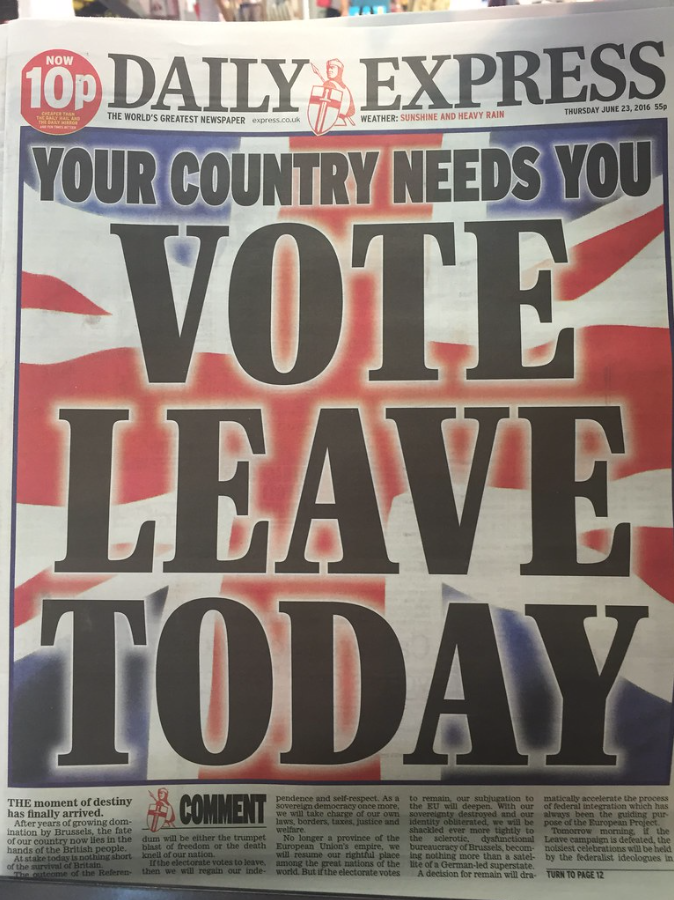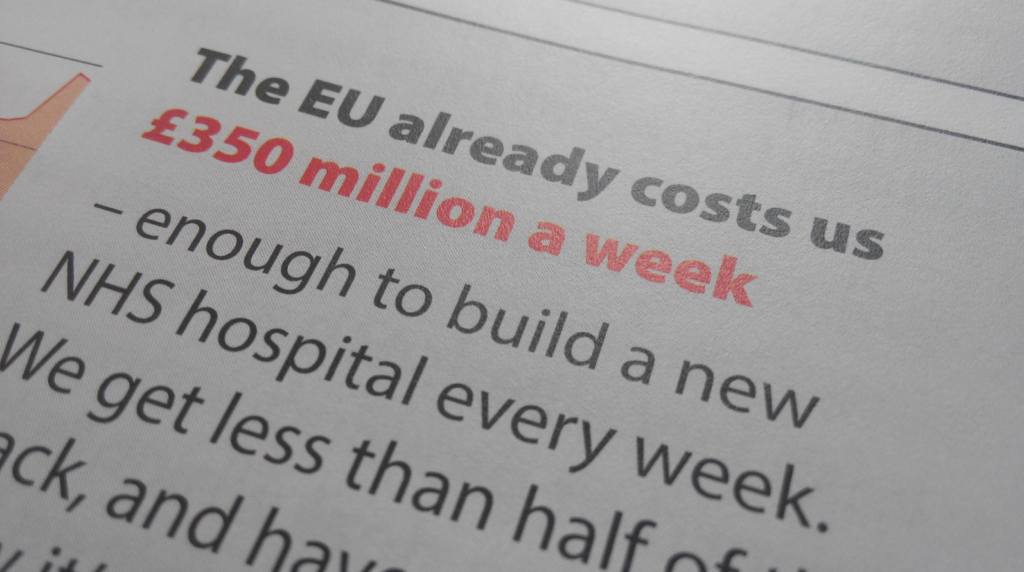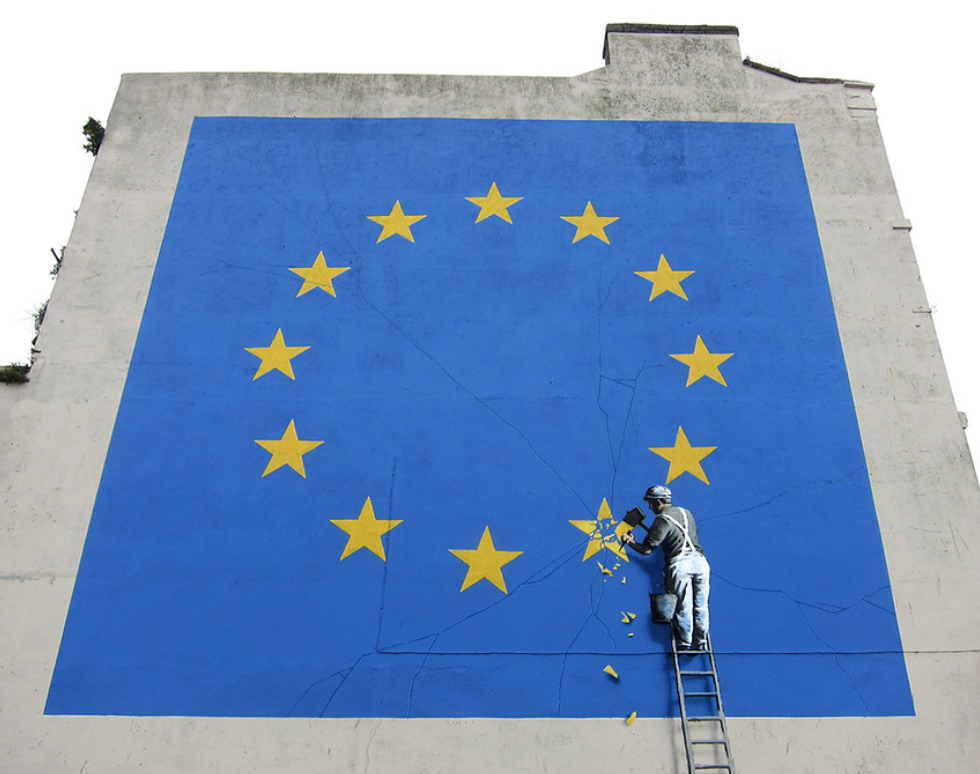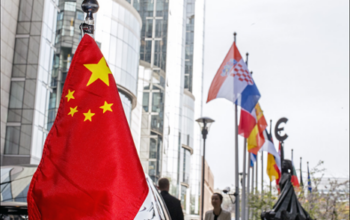On 31 January 2020, Britain became the first country ever to leave the European Union. The Leave campaign leading up to Brexit was, to the surprise of many, a success. But how did they manage to do it?
Britain’s relationship with the EU has always been a problematic one. Their accession to the European Union, then EEC, in 1973 was preceded by two previous attempts, both denied by the French. Then, only two years after joining, a referendum was held in 1975 asking the British people: “Do you think the United Kingdom should stay in the European Community?”. With two thirds of the population voting yes, the country continued to be a member, but the suspicion and mistrust towards the Union always accompanied the 47 years of British membership.
Scepticism appears to stem from this belief of British exceptionalism: they are fundamentally different, and superior to, other nations. In a similar manner, the thought of personal exceptionalism led David Cameron to believe that he could win the referendum on Brexit. The imperial myth of Britain as a superpower leads to the nation approaching the EU from a standpoint that their country deserves a special status and preferential treatment.
To this idea of exceptionalism, the Leave campaign built its narrative. On one hand, the sense of superiority, and on the other hand the myth of being the underdog of the EU facing unfair treatment. Their strategy can be broken down to three parts: (1) simple messaging appealing to people’s emotions, (2) massive social media campaign by micro-targeting, and (3) controlling the debate framing with falsehoods.
False narratives
“We send the EU £350 million a week: let’s fund our NHS instead”, read the side of the infamous Brexit Battle Bus we can all remember. To suggest that such an amount of money would be available for extra spending when the UK leaves the EU was both misleading, as well as a straight up lie. According to different estimates, the actual amount of net payment, after deductions, agriculture subsidies and regional grants, comes down to about £160-190 million a week. And even this amount of money is surely not going to be fully budgeted for the NHS, as post-Brexit customs and legal institutions, among other things, will take up a large part. But the facts didn’t matter. What was important was to build a strong Eurosceptic narrative and appeal to the already existing cynicism of the population.
During the last 25 years or so, British newspapers like the Daily Mail and the Daily Express have been whipping up paranoia related to all kinds of things the EU allegedly wants to ban. Whether it’s curvy bananas, vacuums, kettle pots, lawnmowers or double-decker buses, the EU is about to ban it and Britishness is being severely threatened. These false narratives about the EU are called Euromyths and there have been so many of them circling around, that the European Commission has its own web page dedicated to addressing them. The openly EU-critical news coverage has been widely spread in the British media over the last few decades and that, without a doubt, contributed to the Euroscepticism among the nation. The seed of Brexit has therefore been developing for years before the actual referendum took place.

Social media targeting
A key component in winning the Brexit vote was the massive social media campaign spreading false narratives. The Leave campaign spent 40% of it’s campaign finances on one single technology firm: AggregateIQ. In pounds, this sums up to about 2,7 million, which translates to about 3,2 million euros. AggregateIQ is essentially referred to as a ’’department’’ within Cambridge Analytica; the company that many associate with the ’’fake news’’ around Trump’s 2016 Presidential campaign. The same methods of micro-targeting in social media were substantially used in the Brexit campaign. What this microtargeting essentially boils down to, is targeting individuals based on specific information gathered about them online. Cambridge Analytica is, for example, legally able to buy consumer data sets from airlines and magazine subscriptions and then connect this information with people’s personal data. The aim is to find persuadable voters and target them with suitable triggers. Facebook has proven to be a great source of psychological insights to millions of voters and fundamentally make all of this targeting possible.
While some of the Leave campaign’s ads run on Facebook maintained that new trade deals outside of EU would create 300 000 new jobs in Britain, others included claims ranging from the EU wanting to “kill our cuppa”, banning tea kettles, complaining about “5 million immigrants coming to the UK by 2030” and “Turkey’s 76 million people are granted visa-free travel by the EU”. So the message was not only focused on “costs and control”, but also based on the nationalist and even xenophobic sentiments. Thus, the campaign was successfully able to target a vast amount of people with a diverse set of values. The way in which the falsities were spread, not only through social media but also through mainstream media, was systematic and strategically intelligent.

Controlling the framing
As was established later on, the Leave campaign’s political message was in many ways built on lies, but initially the lies were not intended to be believed; that just came as a bonus. The intention was to frame and warp the debate. Vote Leave’s strategy was to constantly put out misleading information that would then distract the Remain campaign from having to interfere. By this, the Leave campaign managed to set the stage in their own benefit and get the opposite side to play into their hands.
As the Remainers were forced to correct the falsehoods the Leave campaign was actively repeating, they ended up just reinforcing the myths. You see, even though the claim of sending 350 million pounds a week to the EU was false, it impelled the Remain campaign to talk about the fact that Britain does send money to the EU, and that is exactly the subject that the Leave campaign wanted to talk about. Remain’s efforts to concentrate on the single market, economic affairs and all the benefits EU brings to Britain, went to waste. As Dominic Cummings, the campaign director and mastermind behind the Leave campaign, said: “Would we have won by spending our time talking about trade and the single market? No way.”
by Isa Tiilikainen
Photo credits
Banksy does Brexit (detail), Duncan Hull, CC BY 2.0
UK News Brexit Headlines 22nd June 2016, Jeff Djevdet, CC BY 2.0
Vote-leave-misleading-headlines, Abi Begum, CC BY 2.0









